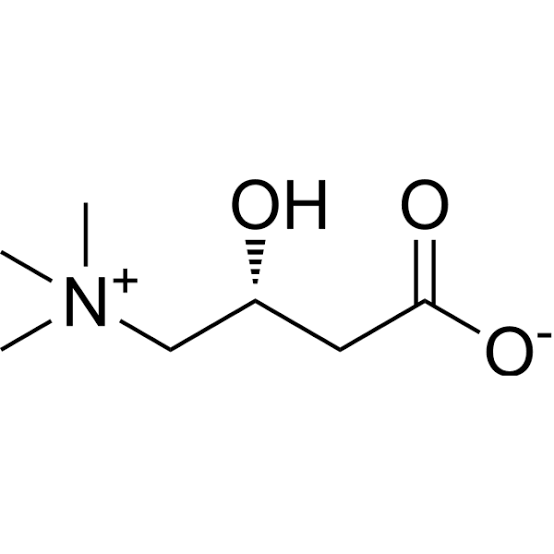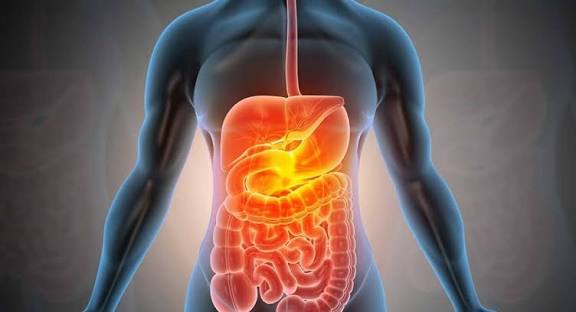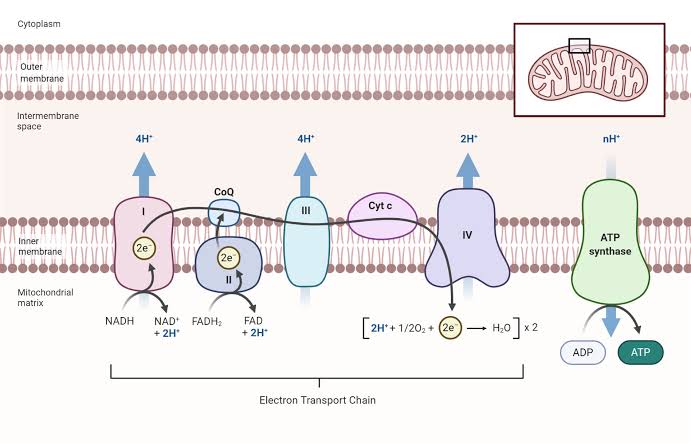
Role of Carnitine in Fatty Acid Transport Across Mitochondria for Oxidation
Carnitine plays a crucial role in the transport of long-chain fatty acids into the mitochondria, where they undergo β-oxidation to produce energy. The process can be broken down into several key steps:
- Activation of Fatty Acids: Before fatty acids can enter the mitochondria, they must first be activated. This occurs in the cytosol where fatty acids are converted into acyl-CoA by the enzyme acyl-CoA synthetase. This reaction requires ATP and results in the formation of acyl-CoA, which is a high-energy thioester.
- Formation of Acylcarnitine: The acyl-CoA cannot cross the inner mitochondrial membrane directly due to its large size and polarity. Instead, it must be converted into acylcarnitine. This conversion is facilitated by the enzyme carnitine palmitoyltransferase I (CPT I), located on the outer mitochondrial membrane. CPT I transfers the acyl group from CoA to carnitine, forming acylcarnitine.
- Transport Across Mitochondrial Membranes: Once formed, acylcarnitine can be transported across the inner mitochondrial membrane via a specific transporter known as carnitine-acylcarnitine translocase (CACT). This transporter exchanges acylcarnitine for free carnitine, allowing it to enter the mitochondrial matrix.
- Reconversion to Acyl-CoA: Inside the mitochondria, another enzyme called carnitine palmitoyltransferase II (CPT II) converts acylcarnitine back into acyl-CoA by transferring the acyl group back to CoA. This step is essential for initiating β-oxidation.
- β-Oxidation: With acyl-CoA now present in the mitochondrial matrix, it undergoes β-oxidation—a series of enzymatic reactions that break down fatty acids into acetyl-CoA units, which can then enter the citric acid cycle for further energy production.
In summary, carnitine is vital for transporting long-chain fatty acids into mitochondria for oxidation because it facilitates their conversion from a form that cannot cross membranes (acyl-CoA) to one that can (acylcarnitine).
Fatty Acids That Do Not Require Carnitine for Transport
Certain types of fatty acids do not require carnitine for transport into mitochondria:
- Short-Chain Fatty Acids (SCFAs): Fatty acids with fewer than six carbon atoms (e.g., butyrate and acetate) can diffuse freely across mitochondrial membranes without needing any transport mechanism or modification by carnitine.
- Medium-Chain Fatty Acids (MCFAs): Fatty acids with 6 to 12 carbon atoms (e.g., caprylic acid and capric acid) also have a higher permeability through mitochondrial membranes compared to long-chain fatty acids. They can enter mitochondria directly as free fatty acids without requiring conversion to acylcarnitines.
- Unsaturated Fatty Acids: Some unsaturated fatty acids may also exhibit increased permeability due to their structural properties; however, this largely depends on their chain length and degree of saturation.
The ability of SCFAs and MCFAs to bypass the carnitine shuttle system is significant because it allows these fatty acids to be rapidly utilized for energy production during periods when energy demand is high or when carbohydrate availability is low.
In conclusion, while carnitine is essential for transporting long-chain fatty acids into mitochondria for oxidation, short-chain and medium-chain fatty acids possess unique properties that allow them direct access without requiring this shuttle system.
Functions of Carnitine and Its Deficiency Due to Primary and Secondary Causes
Carnitine is a quaternary ammonium compound that plays a crucial role in the metabolism of fatty acids. It is synthesized in the body from the amino acids lysine and methionine, primarily in the liver and kidneys. Carnitine is essential for transporting long-chain fatty acids into the mitochondria, where they undergo β-oxidation to produce energy. This process is vital for maintaining energy homeostasis, particularly during periods of fasting or intense exercise.
Functions of Carnitine
- Fatty Acid Transport: The primary function of carnitine is to facilitate the transport of long-chain fatty acids across the mitochondrial membrane. Fatty acids must be converted into acyl-CoA derivatives before they can enter mitochondria; however, these derivatives cannot cross the inner mitochondrial membrane directly. Carnitine binds to acyl-CoA to form acylcarnitine, which can then be transported into the mitochondria.
- Energy Production: Once inside the mitochondria, acylcarnitines are converted back into acyl-CoA by carnitine palmitoyltransferase II (CPT II). This conversion allows fatty acids to undergo β-oxidation, leading to the production of acetyl-CoA, which enters the citric acid cycle (Krebs cycle) for ATP production.
- Regulation of Metabolism: Carnitine also plays a role in regulating metabolic pathways by influencing lipid metabolism and glucose utilization. It helps maintain an optimal balance between carbohydrate and fat oxidation.
- Antioxidant Properties: Emerging research suggests that carnitine may have antioxidant properties, helping to reduce oxidative stress within cells by scavenging free radicals.
- Neurological Function: There is evidence indicating that carnitine may support neurological health by improving mitochondrial function in neurons and potentially having neuroprotective effects.
Deficiency of Carnitine
Carnitine deficiency can occur due to both primary (genetic) and secondary (acquired) causes.
Primary Causes of Carnitine Deficiency
- Genetic Disorders: Primary carnitine deficiency is typically caused by genetic mutations affecting enzymes involved in carnitine synthesis or transport. The most common genetic disorder associated with carnitine deficiency is a defect in the SLC22A5 gene, which encodes a transporter responsible for cellular uptake of carnitine from plasma into tissues.
- Inborn Errors of Metabolism: Other inherited metabolic disorders can lead to impaired fatty acid oxidation due to defective enzymes such as medium-chain acyl-CoA dehydrogenase (MCAD) deficiency or very-long-chain acyl-CoA dehydrogenase (VLCAD) deficiency, resulting in secondary depletion of carnitine as fatty acid metabolism becomes disrupted.
Secondary Causes of Carnitine Deficiency
- Dietary Insufficiency: While carnitine can be synthesized endogenously, dietary sources include red meat and dairy products. A strict vegetarian or vegan diet may lead to insufficient intake if not properly managed.
- Malabsorption Syndromes: Conditions such as celiac disease or Crohn’s disease can impair nutrient absorption, including that of carnitine from food sources.
- Chronic Diseases: Certain chronic conditions like renal failure can lead to loss of carnitine through dialysis or increased urinary excretion without adequate dietary replacement.
- Medications: Some medications, particularly those used for treating seizures (e.g., valproic acid), can interfere with carnitine metabolism or increase its excretion.
- Increased Demand States: Situations involving increased metabolic demand—such as pregnancy, intense physical training, or illness—can deplete bodily stores of carnitine faster than they can be replenished through synthesis or diet.
- Alcoholism: Chronic alcohol consumption may impair liver function and affect both synthesis and utilization of carnitine.
In summary, while carnitive plays a critical role in energy metabolism through its functions related to fatty acid transport and oxidation, deficiencies can arise from both genetic defects and various acquired conditions impacting its availability or utilization within the body.
Clinical Features of CPT-1 and CPT-2 Deficiency
Carnitine palmitoyltransferase (CPT) deficiencies are metabolic disorders that affect the body’s ability to oxidize fatty acids, leading to various clinical manifestations. There are two main types: CPT-1 deficiency and CPT-2 deficiency, each with distinct clinical features.
CPT-1 Deficiency
CPT-1 deficiency primarily affects the liver and is characterized by:
- Fasting Hypoketotic Hypoglycemia: Individuals often experience recurrent episodes of low blood sugar (hypoglycemia) during fasting periods. This is due to the inability to mobilize fatty acids for energy production, resulting in low levels of ketones.
- Symptoms During Fasting or Illness: Symptoms typically manifest during prolonged fasting or illness when the body requires increased energy from fat metabolism.
- Liver Dysfunction: Some patients may exhibit signs of liver dysfunction, including hepatomegaly (enlarged liver).
- Recurrent Episodes: The condition can lead to repeated episodes of hypoglycemia, which may require hospitalization for management.
- Age of Onset: Symptoms usually present in infancy or early childhood.
- Genetic Mutations: Various mutations in the CPT1A gene have been identified, leading to different severity levels among affected individuals.
CPT-2 Deficiency
CPT-2 deficiency has three main forms—neonatal, infantile hepatocardiomuscular, and myopathic—and presents with a broader range of symptoms:
- Neonatal Form:
- Severe Symptoms at Birth: This form manifests shortly after birth with severe respiratory failure, seizures, and liver failure.
- Hypoketotic Hypoglycemia: Similar to CPT-1 deficiency but more severe; infants often have very low blood glucose levels.
- Cardiomyopathy and Arrhythmias: Affected infants may develop heart muscle weakness and irregular heartbeats.
- Structural Abnormalities: Many infants show dysgenesis in brain and kidney structures.
- Infantile Hepatocardiomuscular Form:
- Onset Within First Year: Symptoms appear within the first year of life.
- Recurring Episodes of Hypoketotic Hypoglycemia: Similar to the neonatal form but occurs alongside other systemic issues.
- Hepatomegaly and Cardiomyopathy: Enlarged liver and heart complications are common.
- Risk Factors for Severe Outcomes: Triggered by fasting or infections, leading to potential liver failure or sudden death.
- Myopathic Form:
- Less Severe Symptoms: Characterized by muscle pain (myalgia) and weakness rather than systemic issues.
- Rhabdomyolysis Episodes: Muscle tissue breakdown can occur during exercise or stress, leading to myoglobinuria (dark urine).
- Onset During Childhood or Adolescence: The first episode typically occurs later than in other forms.
- Genetic Mutations: Mutations in the CPT2 gene lead to varying degrees of enzyme activity loss, influencing symptom severity across different forms.
In summary, while both CPT-1 and CPT-2 deficiencies involve impaired fatty acid oxidation leading to hypoketotic hypoglycemia, they differ significantly in their clinical presentations, age of onset, associated symptoms, and severity profiles.
Types of Oxidation of Fatty Acids and Their Importance
Fatty acids undergo various types of oxidation processes, primarily categorized into two main pathways: beta-oxidation and omega-oxidation, along with other less common pathways such as alpha-oxidation. Each type serves distinct physiological roles and has implications for energy metabolism, cellular function, and overall health.
1. Beta-Oxidation
Beta-oxidation is the primary pathway for the catabolism of fatty acids in the mitochondria. This process involves the sequential removal of two-carbon units from the carboxyl end of fatty acids, converting them into acetyl-CoA, which can then enter the citric acid cycle (Krebs cycle) for further energy production.
Steps Involved:
- Activation: Fatty acids are activated to acyl-CoA in the cytosol by the enzyme acyl-CoA synthetase.
- Transport: The acyl-CoA is transported into the mitochondria via the carnitine shuttle.
- Oxidation Cycle: Each cycle consists of four main reactions:
- Dehydrogenation to form a trans-double bond.
- Hydration to add water across the double bond.
- Another dehydrogenation to form a keto group.
- Thiolysis to release acetyl-CoA and a shortened fatty acyl-CoA.
Importance:
Beta-oxidation is crucial for generating ATP, especially during fasting or prolonged exercise when glucose levels are low. It also plays a role in maintaining metabolic flexibility and providing substrates for ketogenesis in liver cells.
2. Omega-Oxidation
Omega-oxidation occurs primarily in the endoplasmic reticulum and involves the oxidation of the terminal methyl group (omega carbon) of fatty acids, leading to dicarboxylic acids.
Steps Involved:
- The process begins with hydroxylation at the omega carbon, followed by further oxidation steps that convert it into a dicarboxylic acid.
Importance:
While omega-oxidation is not a primary pathway for energy production like beta-oxidation, it becomes significant under certain conditions such as:
- When beta-oxidation is impaired (e.g., due to mitochondrial dysfunction).
- In cases of excessive fatty acid intake where omega-oxidative products can be excreted via urine.
3. Alpha-Oxidation
Alpha-oxidation is less common but important for specific fatty acids that cannot undergo beta-oxidation due to their structure, particularly branched-chain fatty acids like phytanic acid.
Steps Involved:
This process involves removing one carbon atom from the alpha position adjacent to the carboxylic acid group through hydroxylation followed by decarboxylation.
Importance:
Alpha-oxidation prevents toxic accumulation of certain branched-chain fatty acids and plays a role in lipid metabolism disorders such as Refsum disease.
4. Other Oxidative Pathways
In addition to these primary pathways, there are other oxidative processes involving peroxisomal oxidation where very long-chain fatty acids are oxidized before being shuttled into mitochondria for further breakdown.
Conclusion on Importance
The various types of fatty acid oxidation are integral to energy homeostasis within cells. They allow organisms to adapt fuel utilization based on dietary intake and energy demands while also preventing toxic accumulation of metabolic intermediates. Understanding these pathways is essential not only for biochemistry but also for clinical applications related to metabolic diseases, obesity management, and cardiovascular health.
Clinical Features of MCAD Deficiency
Medium-chain acyl-CoA dehydrogenase (MCAD) deficiency is a genetic disorder characterized by the body’s inability to metabolize medium-chain fatty acids into energy. This condition primarily manifests during periods of fasting or illness, when the body relies more heavily on fat metabolism for energy. The clinical features typically appear in infancy or early childhood and can include:
- Hypoglycemia: One of the most critical symptoms is low blood sugar levels, which can lead to lethargy, irritability, and in severe cases, loss of consciousness.
- Vomiting: Children may experience recurrent vomiting episodes, particularly during illness or after prolonged fasting.
- Lethargy: Affected individuals often exhibit extreme tiredness and lack of energy, which can be mistaken for other illnesses.
- Seizures: In severe cases, hypoglycemia can lead to seizures due to insufficient glucose supply to the brain.
- Breathing Difficulties: Some patients may experience respiratory distress as a result of metabolic crises.
- Liver Problems: There is a risk of liver dysfunction due to the accumulation of fatty acids that are not properly metabolized.
- Brain Damage and Coma: If untreated, severe metabolic crises can lead to permanent neurological damage or coma.
- Sudden Death: In rare instances, individuals with undiagnosed MCAD deficiency may experience sudden death due to metabolic crisis triggered by fasting or illness.
Symptoms can sometimes be misdiagnosed as other conditions such as Reye syndrome, especially if they occur following viral infections.
Treatment for MCAD Deficiency
The management of MCAD deficiency focuses on dietary modifications and preventive measures to avoid metabolic crises:
- Frequent Meals: Individuals are advised to eat small meals regularly throughout the day to maintain stable blood sugar levels and prevent fasting periods that could trigger symptoms.
- Dietary Composition: A diet rich in complex carbohydrates is recommended while limiting medium-chain triglycerides (MCTs). Foods high in carbohydrates provide a readily available source of energy that does not rely on fat metabolism.
- Emergency Protocols: Families should have an emergency plan in place for situations where the individual cannot eat due to illness or other reasons. This may include administering glucose supplements or intravenous glucose if necessary.
- Avoidance of Fasting: It is crucial for individuals with MCAD deficiency to avoid prolonged fasting and manage any illnesses promptly with medical guidance.
- Genetic Counseling: For families affected by MCAD deficiency, genetic counseling can provide information about inheritance patterns and risks for future pregnancies.
- Monitoring and Supportive Care: Regular follow-ups with healthcare providers are essential for monitoring growth, development, and nutritional status in affected children.
By adhering to these treatment strategies, individuals with MCAD deficiency can lead healthier lives while minimizing the risk of serious complications associated with this condition.
Overview of Zellweger Syndrome and Jamaican Vomiting Sickness
1. Zellweger Syndrome
Zellweger syndrome (ZS) is a severe genetic disorder that falls under the category of peroxisomal biogenesis disorders. It primarily affects newborns and is characterized by significant dysfunction in cellular metabolism, particularly involving the brain, liver, and kidneys. The condition arises from mutations in any of the 12 PEX genes, with most cases linked to mutations in the PEX1 gene. These genes are crucial for the formation and function of peroxisomes—cellular organelles that play a vital role in breaking down fatty acids and detoxifying harmful substances.
The symptoms of Zellweger syndrome typically manifest soon after birth and can include:
- Facial Abnormalities: Distinctive facial features such as a high forehead, wide-set eyes, and a flat nasal bridge.
- Neurological Impairments: Severe developmental delays, hypotonia (decreased muscle tone), and potential hearing or vision loss.
- Liver Dysfunction: Infants may experience liver failure or digestive issues due to impaired metabolic processes.
- Feeding Difficulties: Many affected infants struggle to feed properly, which can necessitate interventions like feeding tubes.
Due to the severity of the condition, infants with Zellweger syndrome often do not survive past their first year of life. There is currently no cure for ZS; treatment focuses on managing symptoms and providing supportive care. Genetic counseling is recommended for families with a history of this disorder to assess risks for future pregnancies.
2. Jamaican Vomiting Sickness
Jamaican vomiting sickness, also known as toxic hypoglycemic syndrome (THS) or ackee poisoning, is an acute illness caused by consuming unripe ackee fruit from the ackee tree (Blighia sapida). This fruit contains toxins known as hypoglycin A and B, which are significantly more concentrated in unripe arils compared to ripe ones. The ingestion of these toxins leads to severe health complications due to their effects on fatty acid metabolism.
The pathophysiology involves the metabolism of hypoglycin A into methylenecyclopropylacetic acid (MCPA), which inhibits beta-oxidation of fatty acids. This disruption results in an accumulation of fatty acids in the liver and depletes glucose reserves leading to severe hypoglycemia. Symptoms typically begin two to six hours after consumption and can include:
- Abdominal Discomfort: Initial signs often involve stomach pain.
- Vomiting: Sudden onset vomiting occurs shortly after abdominal discomfort.
- Severe Complications: In extreme cases, dehydration, seizures, coma, or even death may occur within 12 to 48 hours post-ingestion.
Children and malnourished individuals are particularly vulnerable to this condition. Supportive care includes intravenous glucose infusion and fluid replacement therapy; historically, mortality rates were as high as 80% before effective treatment protocols were established.
Both Zellweger syndrome and Jamaican vomiting sickness highlight critical aspects of human health related to genetic disorders and food safety respectively. While Zellweger syndrome is primarily a hereditary condition with no current cure, Jamaican vomiting sickness serves as a reminder of the dangers posed by certain foods when not prepared correctly.







